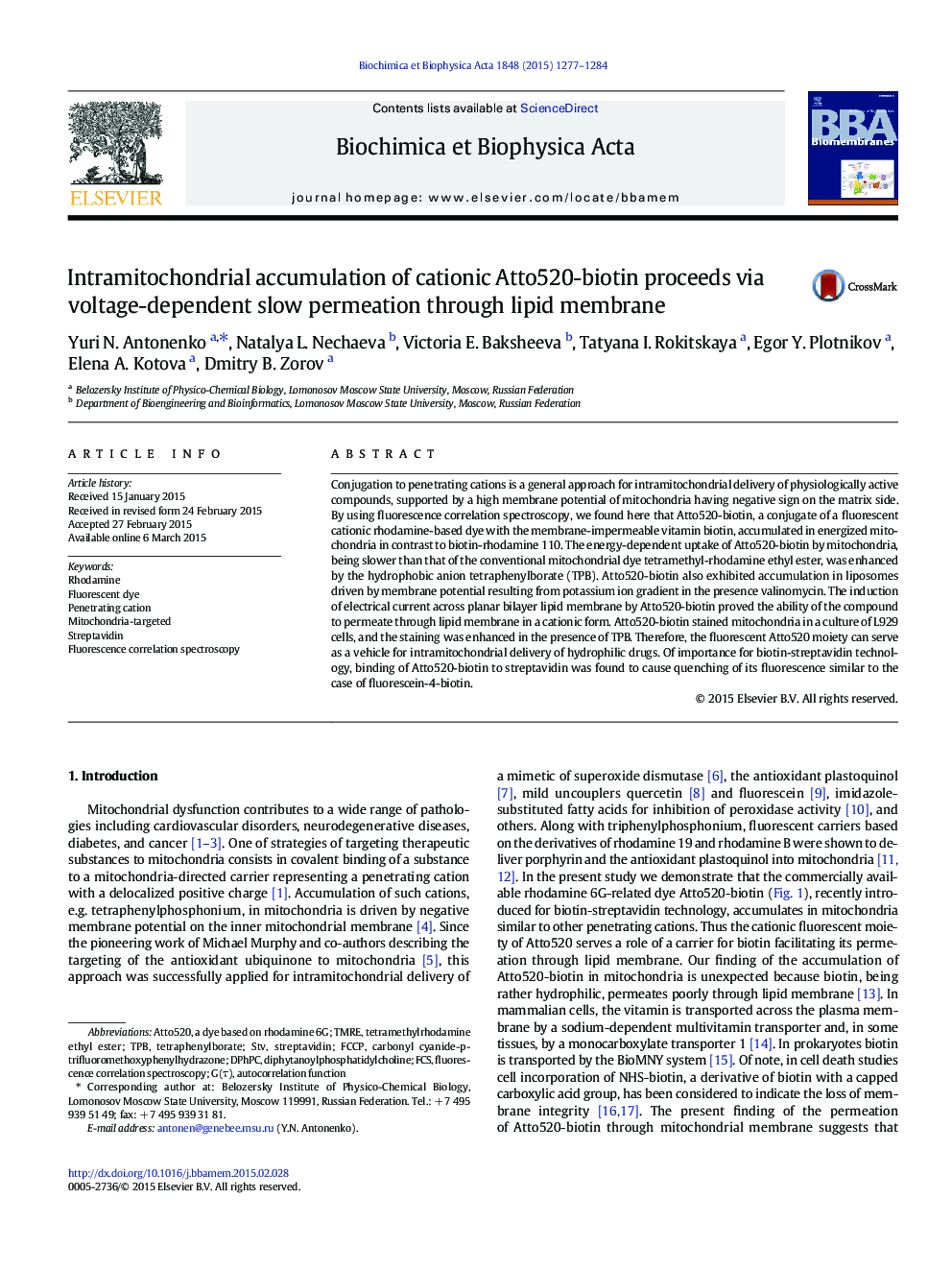| Article ID | Journal | Published Year | Pages | File Type |
|---|---|---|---|---|
| 1944100 | Biochimica et Biophysica Acta (BBA) - Biomembranes | 2015 | 8 Pages |
•Cationic Atto520-biotin accumulated slowly in energized mitochondria.•Zwitterionic biotin-rhodamine 110 did not accumulate in energized mitochondria.•Tetraphenylborate enhanced the uptake of Atto520-biotin by mitochondria.•Atto520-biotin stained mitochondria in a culture of L929 cells.•Binding of Atto520-biotin to streptavidin caused quenching of its fluorescence.
Conjugation to penetrating cations is a general approach for intramitochondrial delivery of physiologically active compounds, supported by a high membrane potential of mitochondria having negative sign on the matrix side. By using fluorescence correlation spectroscopy, we found here that Atto520-biotin, a conjugate of a fluorescent cationic rhodamine-based dye with the membrane-impermeable vitamin biotin, accumulated in energized mitochondria in contrast to biotin-rhodamine 110. The energy-dependent uptake of Atto520-biotin by mitochondria, being slower than that of the conventional mitochondrial dye tetramethyl-rhodamine ethyl ester, was enhanced by the hydrophobic anion tetraphenylborate (TPB). Atto520-biotin also exhibited accumulation in liposomes driven by membrane potential resulting from potassium ion gradient in the presence valinomycin. The induction of electrical current across planar bilayer lipid membrane by Atto520-biotin proved the ability of the compound to permeate through lipid membrane in a cationic form. Atto520-biotin stained mitochondria in a culture of L929 cells, and the staining was enhanced in the presence of TPB. Therefore, the fluorescent Atto520 moiety can serve as a vehicle for intramitochondrial delivery of hydrophilic drugs. Of importance for biotin-streptavidin technology, binding of Atto520-biotin to streptavidin was found to cause quenching of its fluorescence similar to the case of fluorescein-4-biotin.
Graphical abstractFigure optionsDownload full-size imageDownload high-quality image (171 K)Download as PowerPoint slide
